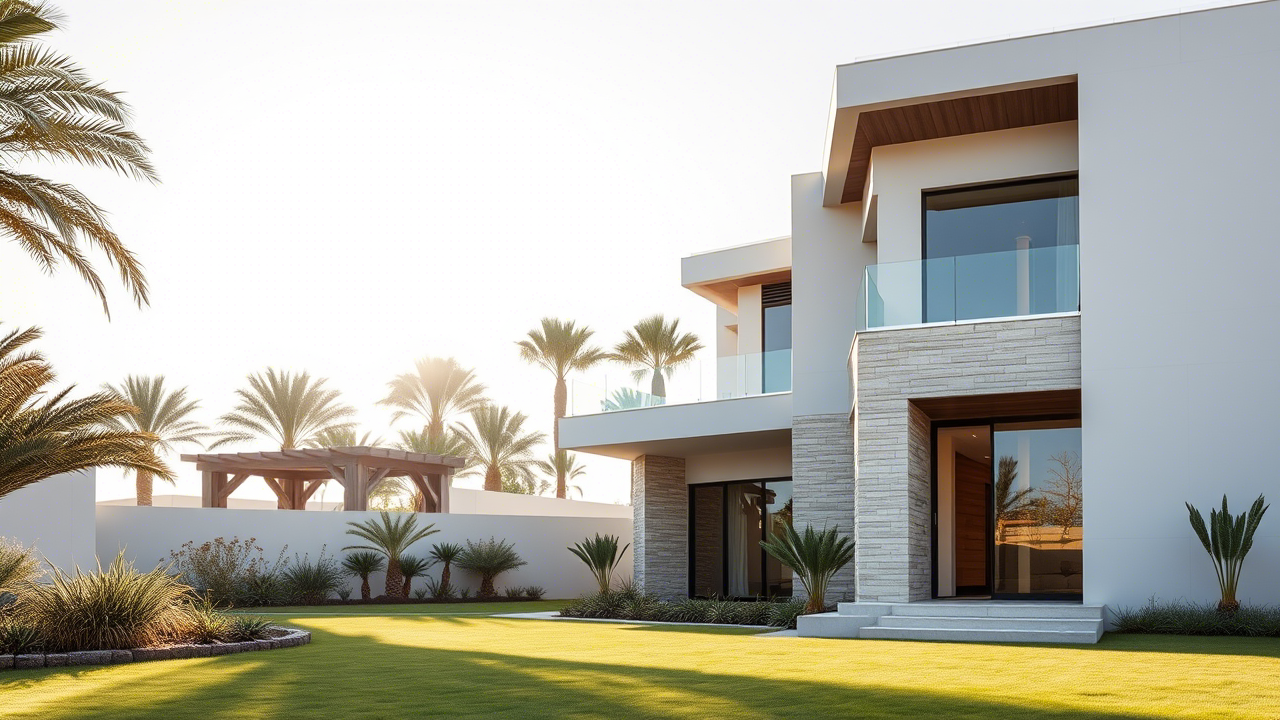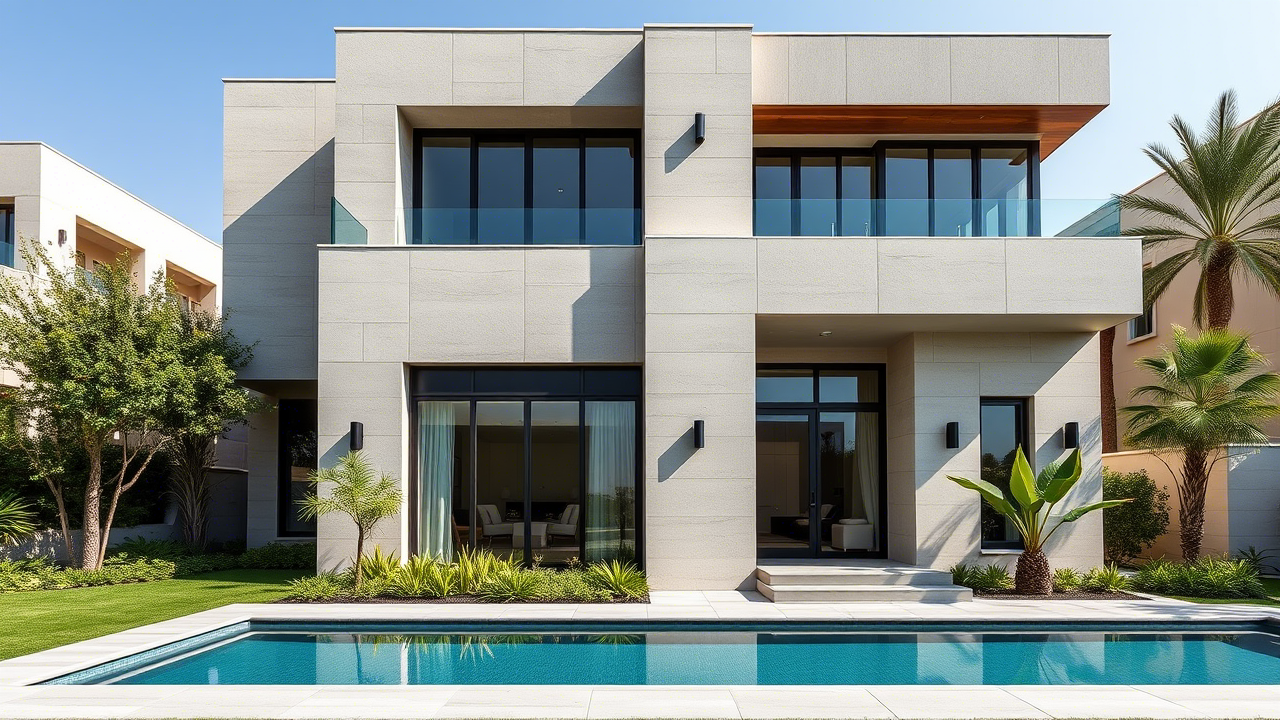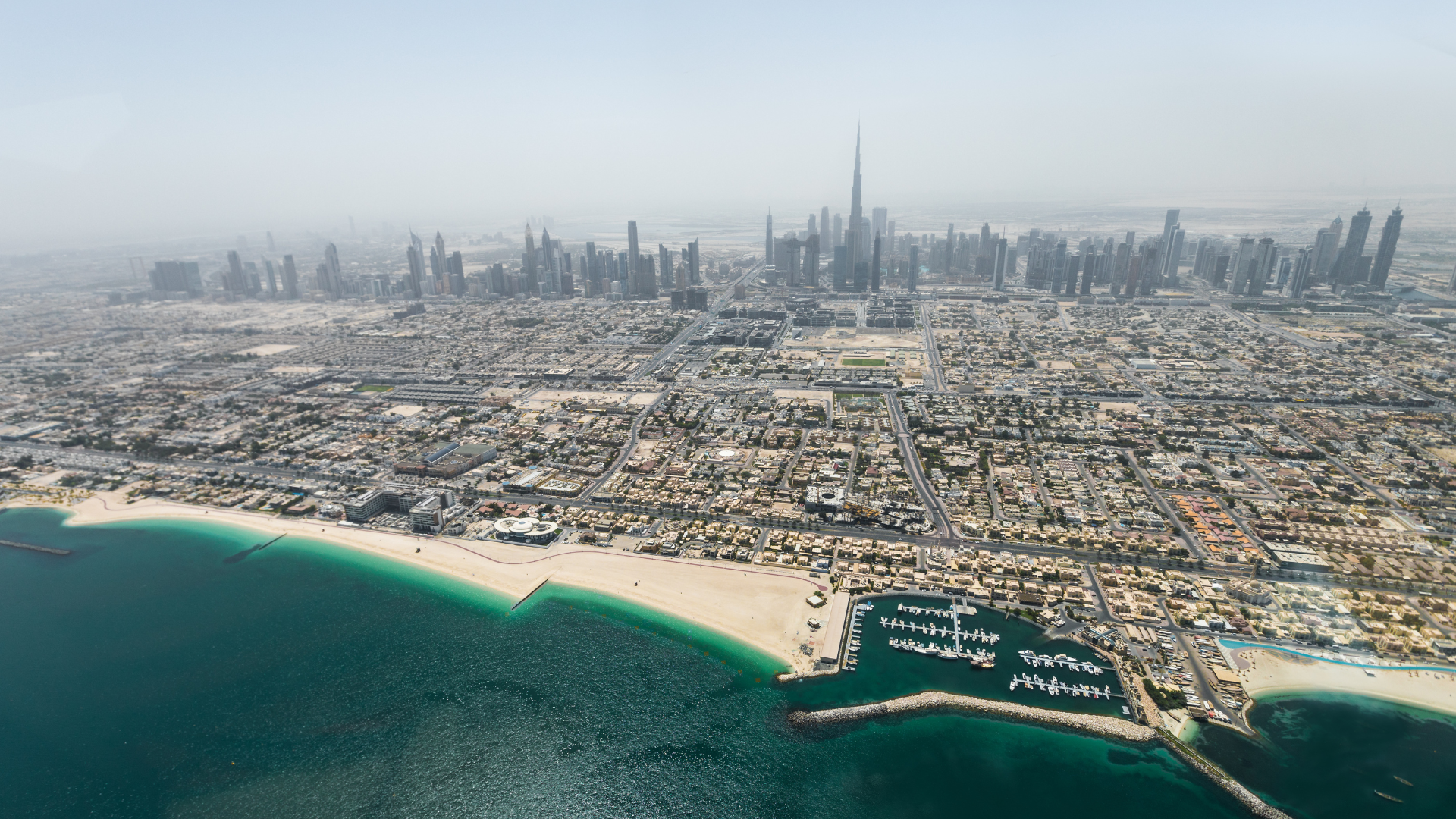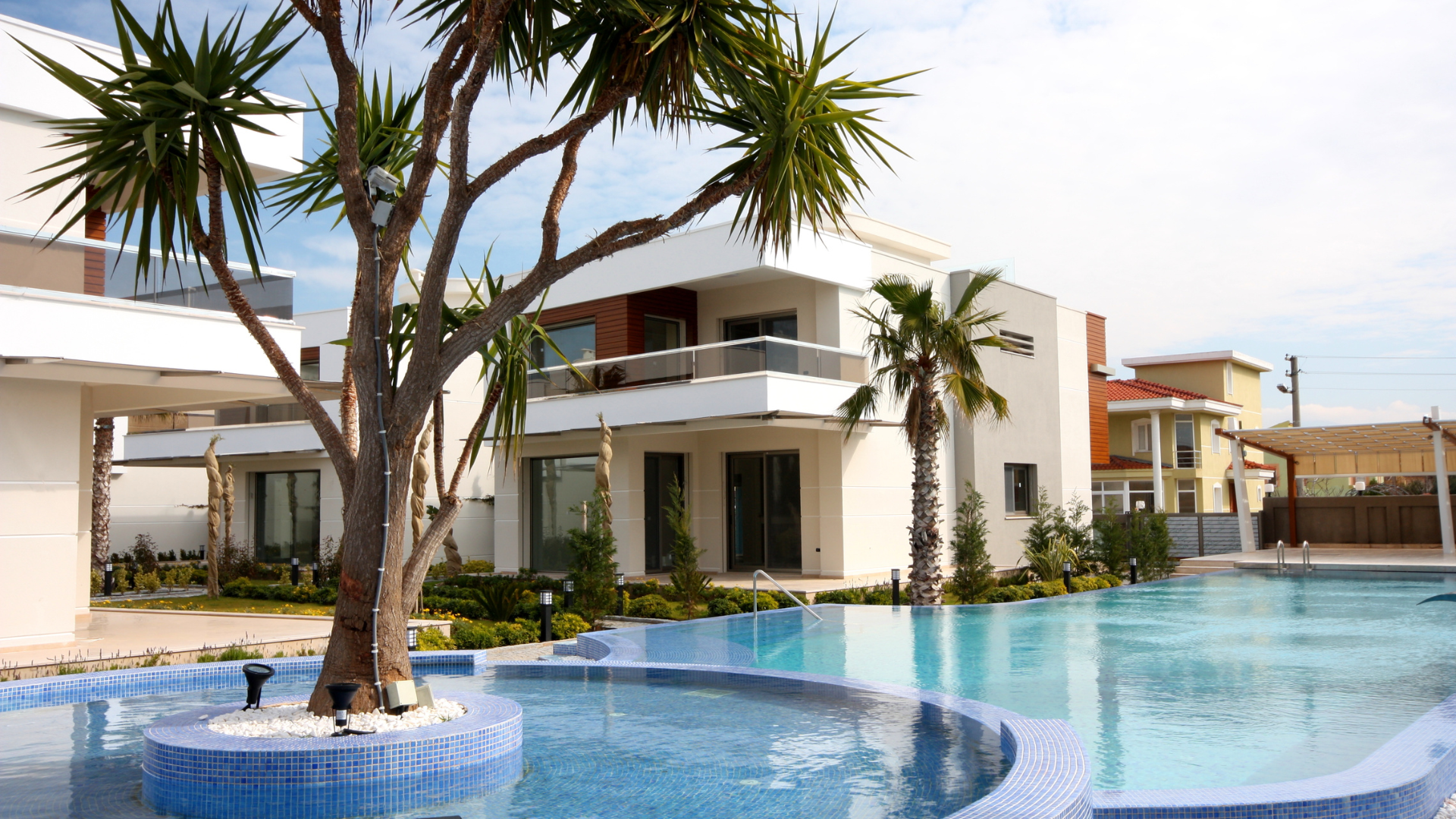Why Villas in Emirates Living and Dubai Hills Remain a Stable Investment in 2025
Investment analytics on Dubai villas: demand, land scarcity, ready properties, ROI, buyer psychology, and strategic conclusions for 2025.
Dubai’s Villa Market in 2025: Resilience Amid Uncertainty
The Dubai real estate market in 2025 continues to attract global investors — but there is a clear shift in sentiment. Over the past two years, villa prices have risen sharply, and experts expect a potential period of cooling. Some analysts note that certain segments of Dubai’s residential market may face a moderate correction in the second half of 2025 following rapid price growth. However, this trend is not universal — and specific communities continue to demonstrate strong resilience, even in changing macroeconomic conditions.
Not all areas are equally exposed to risk. On the contrary, certain communities — especially those with low-density development, mature infrastructure, and high livability — continue to show stable demand. Two of the most prominent examples are Emirates Living and Dubai Hills Estate.
These communities stand out due to their limited land availability, consistent demand from owner-occupiers, and strong appeal for both local families and international investors seeking lifestyle quality and capital preservation.
In this article, we analyze why villas in these two communities remain one of the most resilient segments of Dubai’s real estate market — even as broader trends shift.
The Unique Appeal of Low-Density Communities
In a city known for its vertical skyline and high-density towers, low-density villa communities offer a different — and increasingly valuable — proposition. These neighborhoods provide not only space and privacy but also a sense of permanence that’s especially appealing to families and long-term investors.
What Makes Low-Density Valuable in Dubai?
Unlike high-rise developments, low-density villa areas offer larger land plots, private outdoor spaces, and lower population density. This translates to quieter environments, safer streets, and a more relaxed lifestyle — qualities that have gained new significance post-pandemic.
Moreover, villa communities tend to have stronger homeowner occupancy compared to apartments, leading to more stable demand. Residents are more likely to stay long-term, invest in their properties, and build community ties — all of which contribute to consistent capital appreciation.
In 2025, as some markets face saturation in off-plan apartments, ready villas in established communities remain in short supply, creating a natural floor for pricing.
Land Scarcity and Urban Planning Policies
One of the key structural factors supporting villa prices in communities like Emirates Living and Dubai Hills is limited land availability. Unlike apartment districts, which can be densified vertically over time, low-density villa zones occupy finite land parcels with little to no possibility for expansion.
This scarcity is amplified by Dubai’s master planning regulations, which aim to preserve green space, infrastructure balance, and community character. Height restrictions, plot size minimums, and designated land uses create a controlled supply environment that naturally supports long-term value retention.
Moreover, as the city expands, new villa developments are pushed further from central areas — increasing the appeal of established communities that offer both location and lifestyle. In this context, urban planning constraints become a built-in value driver, reinforcing the rarity and desirability of premium villa neighborhoods.

Emirates Living: The Original Villa Community with Timeless Demand
As one of Dubai’s first master-planned villa communities, Emirates Living holds a unique position in the city’s residential landscape. Developed by Emaar, it includes sub-communities such as The Meadows, The Lakes, The Springs, and Emirates Hills — each offering mature landscaping, community centers, schools, and private villas with plots.
What makes Emirates Living stand out is its established character and organic growth. Unlike newer off-plan districts, this community offers ready villas with proven demand, historical price appreciation, and a highly engaged resident base. Families often move in and stay for years — a sign of long-term satisfaction that fuels consistent capital growth.
Location is another major asset. Emirates Living sits strategically between Sheikh Zayed Road and Al Khail, with quick access to Dubai Marina, Dubai Internet City, and top-tier schools — making it a sought-after area for both family living and rental yield.
In 2025, the supply of available villas here remains extremely limited, and high buyer interest keeps prices firm. For investors and end-users seeking a low-risk, high-stability segment, Emirates Living remains one of the most proven options in the market.
Mature Infrastructure and Resident Loyalty
One of Emirates Living’s most defining features is its fully established infrastructure — a rare asset in Dubai’s rapidly evolving landscape. The community offers mature greenery, developed roads, pedestrian paths, retail centers, international schools, and family-friendly parks. Unlike newer districts still under construction, residents here benefit from a complete, well-functioning environment that requires no waiting or uncertainty.
This maturity translates into resident loyalty. Many homeowners stay for years, upgrading within the community rather than relocating. Such long-term ownership fosters a stable environment and limits speculative turnover, which is why Emirates Living has seen less volatility than many newer villa markets.
Investor Trends and Market Performance
From an investor perspective, Emirates Living offers a strong case for capital preservation and sustainable growth. Historically, villa prices in the area have shown resilience during market cycles, with consistent appreciation over time. This is largely due to its prime location, scarcity of supply, and status as a legacy community by Emaar.
Rental yields remain competitive, particularly for well-renovated units in The Lakes and The Meadows, which attract expat families looking for space, privacy, and school proximity. Demand remains end-user driven, meaning fewer speculative spikes and more stable long-term value.
In 2025, the limited availability of ready villas — combined with ongoing demand from both local and international families — positions Emirates Living as a reliable, low-volatility asset in a market that’s becoming more segmented.

Dubai Hills Estate: A Modern Classic for Families and Investors
Launched as a joint venture between Emaar and Meraas, Dubai Hills Estate has quickly become one of the city’s most in-demand residential communities — blending green open spaces with modern infrastructure and investment appeal.
What sets Dubai Hills apart is its master-planned layout, walkable design, and lifestyle integration. Residents enjoy tree-lined boulevards, cycling tracks, Dubai Hills Park, and the expansive Dubai Hills Mall. The area offers a wide range of villa typologies, including golf course-facing mansions, mid-range family homes, and townhouses — appealing to both luxury buyers and upwardly mobile families.
From an investment perspective, Dubai Hills benefits from strong capital appreciation, consistent rental demand, and proximity to leading schools, hospitals, and Downtown Dubai. Its central location ensures ongoing demand from families seeking accessibility and convenience, as well as from international buyers drawn to high-spec, well-maintained properties.
As of 2025, demand for ready villas in Dubai Hills significantly outpaces supply — especially in gated sub-communities like Sidra, Maple, and Golf Place. For buyers seeking growth with livability, Dubai Hills Estate offers a compelling blend of lifestyle and returns.
Capital Growth, Rentals, and School Proximity
Dubai Hills Estate has established itself as a preferred location for both luxury investors and families due to its consistent capital appreciation, strong rental yields, and unmatched proximity to top-tier schools and healthcare institutions. Its walkable master plan, green space, and retail integration offer a lifestyle advantage that fuels both demand and long-term value.
Well-maintained villas in gated communities such as Sidra, Maple, and Golf Place regularly attract tenant interest, especially from relocating families seeking privacy, space, and educational access. As Dubai continues to develop eastward, the central location of Dubai Hills ensures that it remains logistically advantageous and highly livable — keeping occupancy high and tenant turnover low.
Projected ROI in 2025 Based on Market Data
While return on investment (ROI) in real estate is always subject to market dynamics, Dubai Hills Estate has consistently delivered strong, evidence-based performance. According to recent market reports and brokerage data, gross rental yields for villas in key sub-communities range between 5% and 6%, depending on unit condition and furnishing.
*These figures are indicative and may vary based on market dynamics.
Price per square foot has seen stable upward movement over the last 18–24 months, particularly for properties near the golf course or park-facing homes. Analysts note that demand for family-sized villas remains robust, even as supply tightens in the ready segment.
That said, all ROI figures should be viewed as indicative and not guaranteed. Investment outcomes depend on market conditions, unit specifics, and lease structuring. For this reason, tailored financial modeling and expert due diligence remain key parts of any acquisition strategy — and at DCI Group, these services are always available to our clients.
Ready Villas vs. Off-Plan: Where’s the Opportunity?
Dubai’s residential market continues to evolve, and in 2025, the gap between ready properties and off-plan investments has widened significantly. While off-plan developments offer attractive entry prices and future growth potential, they also carry timing risks — especially in an environment where demand for immediate occupancy is high.
In contrast, ready villas in established, low-density communities like Emirates Living and Dubai Hills are seeing intense demand from buyers who want to move in now or start generating income without construction delays. These properties also tend to retain value better during market fluctuations, as they are backed by historical transaction data, tangible infrastructure, and proven desirability.
That said, off-plan is not off the table — but success in that segment requires a more nuanced approach in 2025. The key lies in identifying developer credibility, construction timelines, pricing phases, and legal transparency. In this environment, a mixed strategy may offer the best outcome — balancing the security of ready assets with the long-term upside of select off-plan deals.
Supply Gaps in Ready Units
In 2025, one of the most pressing challenges for buyers is limited inventory in the ready villa segment. Established communities like Emirates Living and Dubai Hills have a finite number of properties — and most are already occupied by long-term residents or held by owners with no urgency to sell.
This shortage creates a highly competitive environment, especially for villas that are well-maintained and priced realistically. New listings in these areas often receive multiple offers within days, particularly if they’re turnkey or recently renovated.
Unlike the off-plan segment, where developers can release phased inventory based on demand, ready stock is not easily replenished. Buyers seeking immediate usage — whether for personal living or rental — often find themselves in bidding scenarios or waiting for the right unit to become available.
This imbalance between demand and supply is one of the key factors supporting price stability and upside potential in Dubai’s top villa districts.
Risk-Adjusted Strategy: When Off-Plan Still Works
Despite rising caution, off-plan properties still hold strategic value — but only under the right conditions. In 2025, success in this segment depends heavily on project timing, developer reliability, and market positioning.
Select launches from tier-one developers like Emaar, Ellington, and Sobha continue to attract attention — especially when priced below current ready-market comparables or located in emerging lifestyle hubs with future infrastructure growth.
Off-plan works particularly well for investors with longer time horizons, who can weather short-term volatility in exchange for potential capital gains at handover. It also suits buyers who prioritize payment plans over upfront capital deployment.
That said, not all off-plan is equal. Projects lacking transparency, realistic timelines, or strong location fundamentals are increasingly being filtered out by informed investors. In this climate, off-plan can still be a powerful tool — but it must be part of a diversified, risk-adjusted portfolio strategy.
Buyer Psychology in 2025: What Drives Decisions?
In 2025, buyer behavior in Dubai’s villa market is increasingly shaped by a blend of lifestyle priorities and financial strategy. Unlike earlier cycles where speculative investors dominated, today’s buyers are more discerning, seeking long-term value, stability, and usability.
For end-users — particularly families relocating to Dubai — the focus is on immediate livability, school access, and community environment. For these buyers, ready villas in established neighborhoods offer emotional security and practical convenience.
For investors, the priority is risk-adjusted returns backed by clear data. They are more selective, often consulting professionals on ROI forecasts, exit strategies, and rental potential. Emotional appeal takes a back seat to rational, evidence-based decision-making.
Buyers are also increasingly influenced by macro trends: global capital movement, currency dynamics, geopolitical uncertainty, and the relative safety of Dubai as a wealth preservation hub. As a result, decision-making in 2025 is more strategic, analytical, and value-driven than ever before.
Strategic Takeaways for Investors and Relocating Families
For both investors and relocating families, Dubai’s villa market in 2025 offers opportunity with conditions. The key is understanding where value is sustainable — and aligning choices with long-term goals.
For investors, focus should remain on well-established, low-density communities with high livability, proven demand, and limited new supply. Prioritize ready units in prime locations — or selectively explore off-plan from top-tier developers where fundamentals align.
For families, the priority is location, community infrastructure, and quality of life. Buying a ready villa in a walkable, green, and school-accessible area means less compromise and more certainty from day one.
In both cases, a data-backed, advisory-led approach is crucial. Gone are the days of speculative flips — 2025 is the year of strategic real estate decisions. The best outcomes come from working with experts who can align market realities with personal or investment objectives — and guide you confidently through each step.
Frequently Asked Questions (FAQ)
Q1: Are villas in Dubai still a good investment in 2025?
A: Yes — especially in established, low-density communities like Emirates Living and Dubai Hills. While broader market segments may face adjustments, demand for ready, well-located villas remains strong due to limited supply and high livability.
Q2: What is the average ROI on villas in Dubai Hills and Emirates Living?
A: As of mid-2025, gross rental yields for villas in these areas average between 5% and 5.2%, depending on unit type, condition, and rental strategy. These figures are indicative only and may vary based on market conditions.
Q3: Is off-plan still worth considering?
A: It can be — if approached with care. Focus on projects from top-tier developers, in prime locations, with realistic timelines and clear legal structures. Off-plan works best as part of a diversified portfolio, not a speculative bet.
Q4: How competitive is the market for ready villas?
A: Very. Turnkey properties in desirable communities often receive multiple offers shortly after listing. Working with an advisor who has early access or off-market reach can make a critical difference.
Q5: What are the main drivers for villa demand in 2025?
A: Family relocation, lifestyle appeal, capital preservation, and the desire for space and privacy — especially in a city with increasing vertical density — continue to drive demand for villas.
Conclusion: Stability Is the New Growth
As Dubai’s property market enters a new phase of maturity, the villa segment — particularly in Emirates Living and Dubai Hills — stands out for its resilience, livability, and strategic value. While short-term fluctuations may impact speculative areas, well-located, low-density communities continue to demonstrate long-term strength.
In 2025, success lies in clarity — not just in the asset you choose, but in how you approach the market. For investors and families alike, villas in Dubai’s top residential areas offer a rare blend of lifestyle and legacy. When guided by expert insight and backed by data, real estate becomes more than a purchase — it becomes a long-term strategy.
Ready to explore villa investment opportunities in Dubai?
Relocating to Dubai, expanding your investment portfolio, or looking for a ready villa with growth potential?
DCI Group is a developer and your end-to-end partner:
— Tailored strategy aligned with your goals
— Selection of properties with growth potential
— Renovation and value-add projects
— Full support from initial review to key handover
— Turnkey solutions — from analysis to final delivery
Get in touch — we’ll review your needs and define your personalized strategy.
Contact DCI Group: Your Partner in Dubai Real Estate
⚠️ Disclaimer: This article is provided for informational purposes only and does not constitute personalized investment advice. All investments carry risk. Projected returns and market trends are based on current data and do not guarantee future performance — actual outcomes may be lower or higher than expected. We recommend making decisions based on comprehensive analysis and a well-considered strategy.





